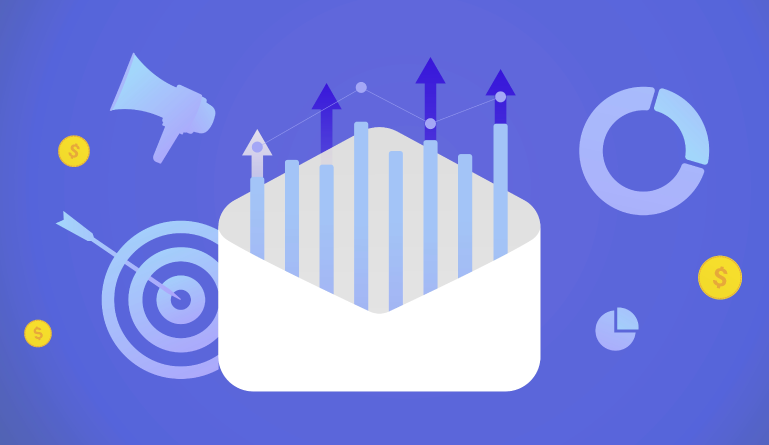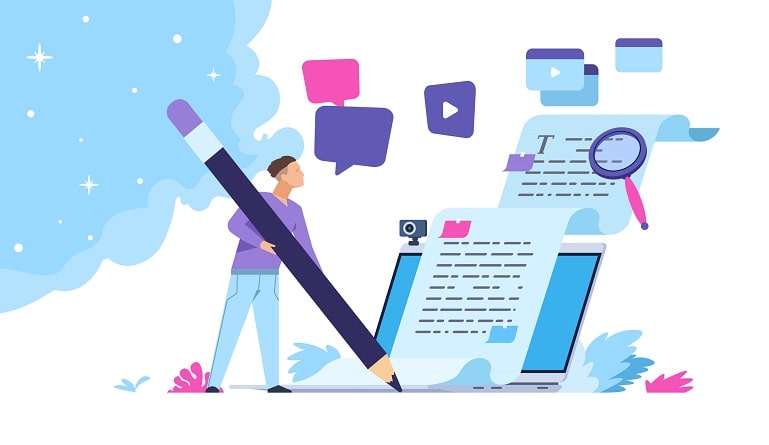Email marketing is among the most effective marketing strategies employed by businesses across all sectors and categories. It is utilized by business owners to establish and maintain relationships with subscribers, promote their brand, and provide discounts or incentives to their high-CLV customers. And research suggests that email newsletters are the most popular form of content marketing for 81% of B2B marketers – but how do you use this channel to not just grow leads, but also drive sales? Read on.
Understanding Email Marketing
Email marketing for business-to-business customers is referred to as B2B email marketing. The primary objective is to nurture relationships with prospective clients, increase brand recognition, and generate sales. Effective strategies involve the distribution of newsletters, special offers, product updates, and complimentary tools that are all hyper-tailored to the recipient’s wants and needs.
When executed properly, B2B email marketing provides recipients with valuable information that motivates them to purchase something or perform some other desired action that pushes them further down the marketing funnel.
Components of Email Marketing That Helps Drive Sales
Three factors distinguish B2B email marketing from generalized (B2C) marketing automation. This is exactly why it increases sales:
1. Account-based email targeting
When you select a B2B target, you are actually defining a group of targets, and your strategy must take into account the variances between the numerous prospects inside a company. To effectively reach people and generate sales, you must send unique emails to distinct individuals, all belonging to your target organization.
2. Longer lead times and sales cycles
In the B2C universe, buying a product is a short process. Contrarily, the procuring process for a business can be time-consuming. It is a lengthy process to get different departments to collaborate on a purchasing decision, particularly one that demands budget approvals.
3. Value-adding content
Therefore, when drafting B2C emails, you might want to be more transparent about your goal of closing a sale. Focusing on offering detailed resources and information tends to increase the effectiveness of B2B emails, on the other hand. Educational content such as growth reports, industry standards, buyer’s guides, and webinar videos demonstrates to a B2B customer the value and significance of your brand.
5 Tips to Drive Sales with Email Marketing
Now that we know the crucial components that make email marketing campaigns so effective, here are a few tips to get started and actually drive sales:
1. Rethink the subject line
The subject line serves as the most crucial element of your email marketing campaign. To increase revenue, you must open with the very first thing that people read. For instance, a query is frequently an effective way to entice people to open an email, which serves as the sole way to generate email revenues.
2. Edit your email copy for brevity
Although there is no standard limit for the number of words in the email, compelling and effective emails contain between 50 and 125 words. This will vary depending on the type of content you offer, but as a general rule, you should strive for succinct messaging.
Keeping the information to a few sentences and brief paragraphs makes it simpler for readers to peruse an email for pertinent information. Consider placing long-form content on your website and referring to it in the email rather than including it all in the message body.
3. Make your CTA easy to spot and click
Your email’s call-to-action (CTA) must be pronounced and purpose-driven regardless of the intended action. This implies that you should devote a lot of time when crafting the appropriate message. According to CampaignMonitor, using a CTA icon can boost click-through rates by 28% compared to using a plain-text link. Test a few distinct call-to-action (CTA) buttons or icons to determine which will truly impact purchasing decisions.
4. Adopt B2B email marketing automation
Automation of email marketing is the usual strategy for increasing revenues. In addition to making your organization more efficient, it can also enhance email performance and return on investment. When using an automated email marketing campaign, users can optimize when emails are sent and remarketed to the guests/visitors on your B2B website.
5. Use A/B testing to understand which email marketing tactics drive sales
While the majority of businesses depend on email marketing automation, most email marketers don’t use split or A/B testing in email campaigns.
A/B testing is an optimization tool that allows you to compare different iterations of your emails to determine which version works best with the target audience. A/B testing enables you to test emails on one’s actual subscribers, providing you with accurate data to guide your email marketing plan and achieve the intended outcomes (i.e., more sales and revenue).
Questions to Ask if Your Email Marketing Campaigns are Not Driving Sales
If your email marketing campaigns have peaked and are unable to drive sales, it’s worthwhile to ask yourself a few key questions.
1. Do you have a clear, high-intent email list to work with?
A successful email marketing campaign requires a robust email subscriber list. You must assemble a mailing list of individuals who truly want to listen to you and provide them with material, offers, and news that they will find extremely useful. Adding opt-in alternatives for your email list across your website is a smart method to accomplish this.
2. Have you segmented your audience?
You’re probably already using email segmentation to stop sending the very same email to everyone on your list. If you’re not currently doing so, you should consider geolocation, profession, interests, purchasing patterns, and past browsing history, as benchmarking categories.
But do not discard your master inventory. If you replace your primary subscriber list with a multitude of tiny segmented lists, email segmentation can become problematic. A master list facilitates the eventual development of new segments and the necessary adjustment of email marketing techniques.
3. Are you over-automating?
Email automation is a helpful tool because it allows you to deliver high-quality emails with much less effort and time. It also allows you to send multiple emails to your checklist with the press of a button. Avoid sending too many emails to your list of subscribers and crashlanding in one‘s spam folders.
4. Are you focusing enough on the actual email content?
It could be counterintuitive if you only send your subscribers promotional emails. To achieve the best results, it is essential to mix and match — to keep playing with the core components. With informational emails, you can ensure that your subscribers are up-to-date on any new or exciting developments concerning your brand. Also, make sure to inform your readers of any new partnerships, significant internal adjustments, and other developments.
5. Are you ending up in the customer’s spam folder?
If your emails are really being designated as spam as well as being blocked by spam filters, you may need to adjust your email settings – as this is a surefire way to nip a sale in the bud. Double opt-in is one method to avoid this issue. This occurs whenever a user registers for email marketing and then verifies the subscription through a distinct email as well as a landing page in order to be put on an email list. This procedure minimizes the likelihood of spam and heightens the user’s interest. Also, avoid spam-like phrases like “please read” and “giveaway.”
Final Thoughts
Email marketing may serve as an effective method for attracting consumers and generating revenues. To increase the efficacy of your initiatives, you must, however, know how to strategize your emails and make the most out of them.
By following the tips and best practices we discussed, you can improve your email marketing outcomes and drive sales. However, given that the sales cycle from B2B email marketing can be on the longer side, make sure to measure other metrics in the meantime – such as clickthrough, bounce, email forwarding rate, open rate, and un-subscriptions.
Also, keep an eye on the 23 marketing metrics to track in 2023 to increase your overall sales numbers.





